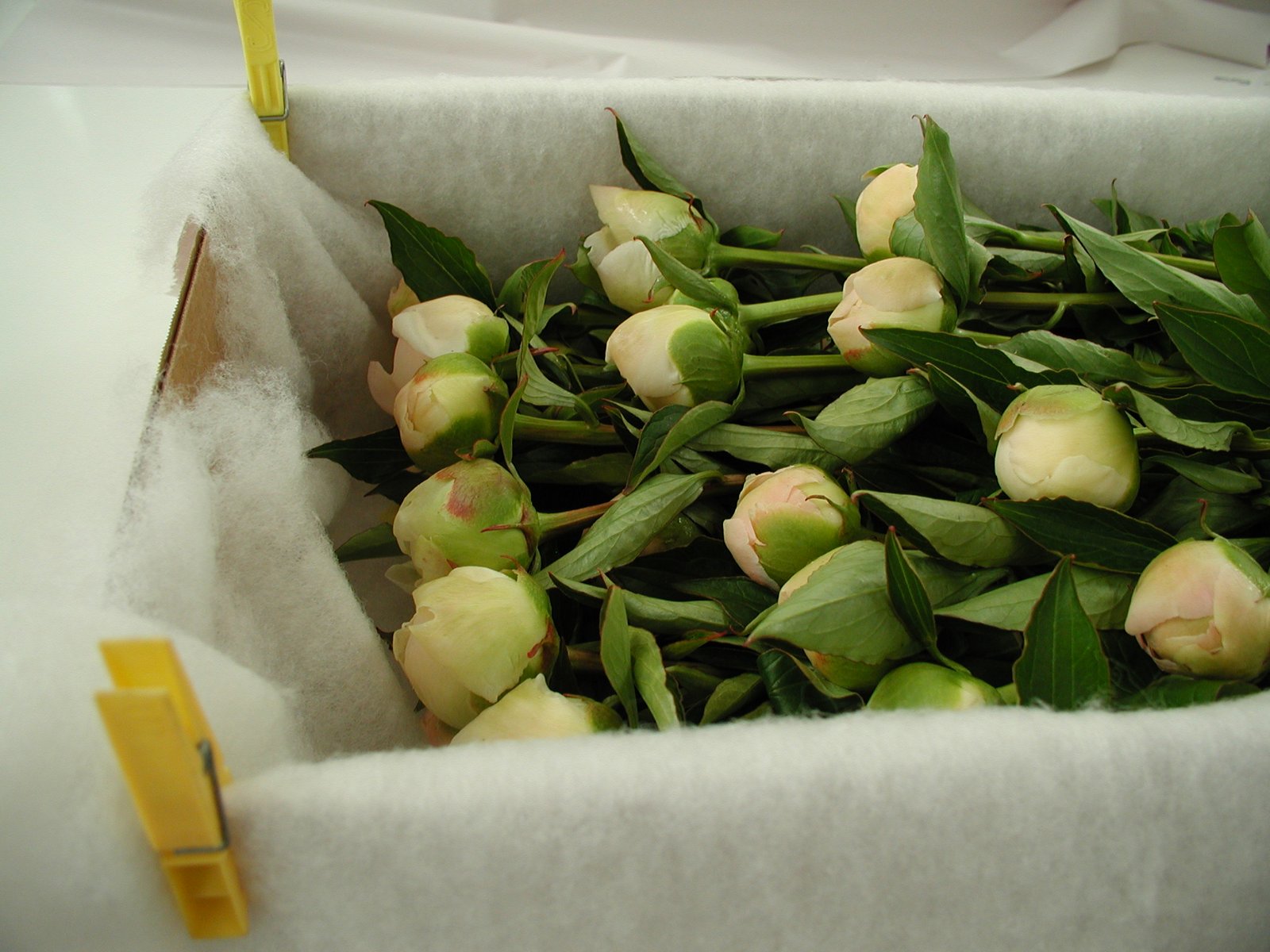Peony Care
April 18, 2016
Categories: Post Harvest



Your box has arrived, now what?
I wish someone would discover what peonies have in their make-up that results in their fantastic resilience. I‘ve seen cut peonies totally wrinkled (like me) and withered but with a quick stem cut and hydrating them in water for a few hours, they look good as new. Just think if we could figure out how to use that on humans!!
We certainly recognize purchasing peonies for your special event is an investment and needs to be protected to insure the best outcome. We use state of the art post-harvest procedures (See Blog Cutting Peonies) to make sure everything on our end is done to prolong the life of the cut peonies, we use Dacron to insulate and protect the buds in the thick walled shipping boxes and adding ice packs. Shipping overnight priority by Fed Ex is the last thing we do to guarantee the best outcome.
When you receive your box of peonies, there are many things you can do to insure the longest vase life and to adapt the opening of the blossoms to suit your particular needs. But, first of all, inspect the peonies to make sure they haven‘t been damaged during shipping, check for insects and botrytis (brown spots on the buds). Alaska Perfect Peony has had one complaint in our years of shipping and it was white flowers that developed botrytis during shipping. While these concerns are rare, it is necessary to carefully check upon opening your box to see if there are any problems. If you observe a possible problem, take photos to show to the farm and immediately contact the farm to get advice, get credit or perhaps there may be time to receive a replacement shipment.



Assuming there are no problems it‘s time to start rehydrating the stems. The method and tools you use for this process is the key to success and a long vase life. Hygiene is the first step. Dirty water, equipment or vases/buckets can lead to an explosive growth of micro-organisms causing the stems to clog and stopping nutrients and water to flow up the stems triggering flower development to delay or stop. Clean water and tools therefore is first step to success.
What is the best water for flowers? It is a myth to use hot or boiling water to seal stems. Actually what happens with hot water is the tissue is completely destroyed stopping any nutrients to travel up the stems. The goal is to have the water carrying nutrients travel up the stem into the growing cells of the cut flower providing strength. Ice water dissolves the air bubbles that may have developed during shipping. Dissolving the air bubbles opens the way for water absorption. Cold tap water is also fine to use.
When you have the perfect water and clean holding vessel prepared with about 4-5 inches of water add the packet of food we have included in your box. All cut flowers benefit from the nutrients in flower food allowing the flower to still bloom in a natural way, retaining its color, form, and fragrance. Now it‘s time to cut the stems in a diagonal about three inches up the stem with sharp clippers or scissors. Cutting under flowing water is another one of those myths proven not to be true. After cutting the stems plunge them in your prepared water solution. It does not hurt the flowers to have more/deeper water in your holding vessels as long as the leaves are not in the water.



Do not store your cut peonies in direct sunlight or heat. This will shorten the life of the flowers speeding up the ageing process. Storing the stems in a cool dark place will lengthen the vase life. Keeping the stems cold will slow down the bud opening process. Putting them in a warm (not direct sunlight) place will hasten the opening. By manipulating the storage temperatures, you can have fully opened to almost closed buds from the same shipment.
Remember, the stems have dehydrated during shipping and will use a lot of water when you first start your hydration process. Keep an eye on the water level. When adding water, be sure to add the same formula of flower food used originally.
Categories
- Marketing (2)
- Post Harvest (5)
- Starting a New Farm (10)
